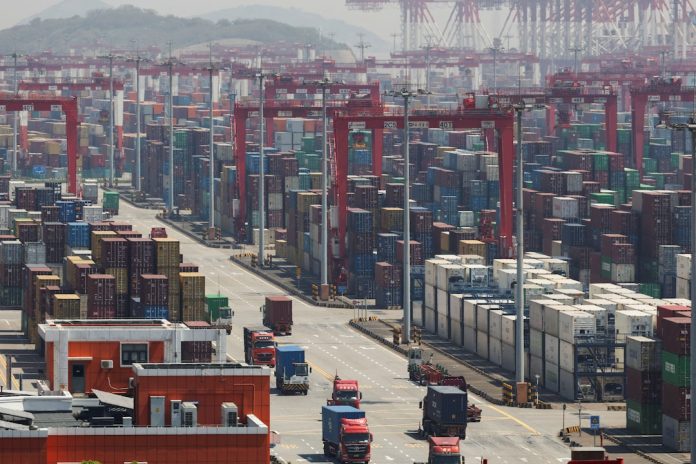China’s economy in the first quarter of 2025 showed growth of 5.4% year-on-year, exceeding the expectations of analysts Reuters (5.1%) and repeating the pace of the fourth quarter of 2024. The main drivers were growth in domestic consumption and industrial production, despite increasing foreign policy pressure from the US.
According to the National Bureau of Statistics, industrial production rose by 7.7% in March, the highest since June 2021. Retail sales increased by 5.9%, well above forecasts (4.3%) and the best result since December 2023. Consumption growth was largely driven by the government support programme for trade in consumer goods, which stimulated especially sales of electronics and furniture.
Nevertheless, in nominal terms, GDP grew more modestly, suggesting continued deflationary pressures. China continues to face the challenges of a two-speed economy, with output growth outpacing a weak recovery in consumer demand. At the same time, unemployment remains elevated, which also limits the economic recovery.
The property sector continues to weaken: property investment fell by 9.9% year-on-year in January-March, continuing the negative trend of the beginning of the year. New house prices were unchanged in March but are still showing a fall in annualised terms.
Trade war and economy
The key external risk remains the trade war with the US, which escalated in April: President Donald Trump raised tariffs on Chinese goods to 145%, to which Beijing responded with tariffs of up to 125% on US imports. These measures, according to the UBS analysts, “pose unprecedented challenges for Chinese exports” and could lead to significant structural changes in the domestic economy.
There was a temporary spike in Chinese exports in March as manufacturers rushed to ship products before the new tariffs took effect. However, exports are expected to fall sharply in the coming months, adding pressure to the economy.
According to Reuters, China’s GDP growth may slow to 4.5% by the end of 2025, while the official target is 5%. UBS lowered its forecast even more – to 3.4%, expecting the continuation of tariff pressure and Beijing’s retaliatory measures.
Financial market reactions
Against this backdrop, the Chinese authorities announced their readiness to take additional stimulus measures. Premier Li Qiang confirmed that the government has the necessary tools to support the economy. New fiscal measures were announced in March, including an increase in the budget deficit, and the Politburo is expected to meet in late April to set the political and economic agenda for the coming months.
Meanwhile, financial markets reacted cautiously, with the CSI 300 index down 1 per cent in morning trading as strong economic data could delay additional stimulus, while the yuan remained largely unchanged. Fitch downgraded China’s sovereign credit rating, citing rising government debt and heightened fiscal risks.
According to EIU economist Xu Tianchen, the 5.4 per cent growth is a “very good start,” but China has experienced in the past that a successful first quarter was followed by a weaker second quarter. He said that in the current environment, a strong and timely policy response is needed to counter both external and domestic risks.
